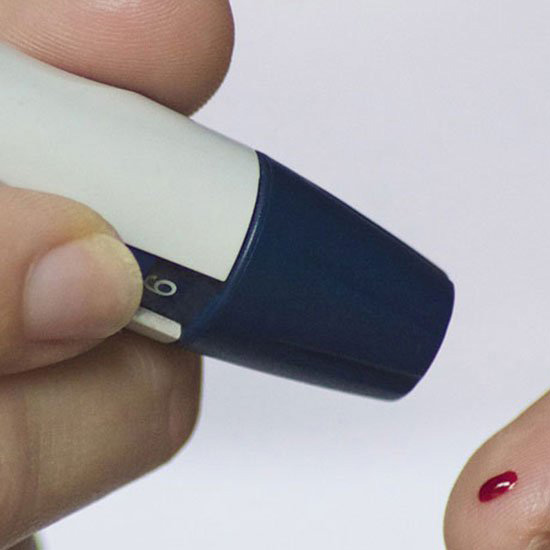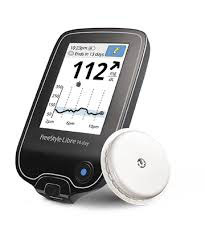Lifestyle Changes, Meds May Prevent Diabetes in Those at Risk

November 10, 2017
Diabetes may be effectively prevented by lifestyle modification (LSM) and medication interventions in patients at risk for the disease, researchers reported.
In a meta-analysis, active lifestyle modification — ranging from 6 months to 6 years — was associated with a pooled relative risk reduction of 39% (risk reduction 0.61, 95% CI 0.54-0.68) for the development of diabetes, according to J. Sonya Haw, MD, of Emory University in Atlanta, and colleagues.
Lifestyle modification was also tied to a significantly lower risk difference of diabetes incidence compared with controls (7.4 cases per 100 person-years versus 11.4 cases, 95% CI 1.8-6.3), they wrote in JAMA Internal Medicine.
Similarly, medication intervention — active use ranging from 1 year up to 6.3 years — was tied to a 36% relative risk reduction for diabetes (0.64, 95% CI 0.54-0.76), with a significant risk difference for the development of diabetes compared with controls (5.4 cases per 100 person-years versus 9.4 cases, 95% CI 2.3-5.7).
But “medication effects were short lived. The LSM interventions were sustained for several years; however, their effects declined with time, suggesting that interventions to preserve effects are needed,” the authors wrote.
Haw’s group determined 25 individuals would have to be treated with either lifestyle modification or medication intervention to prevent one case of diabetes.
“Diabetes affects one in 11 adults worldwide and though there is evidence that lifestyle modification (eating healthier diets and exercising) and certain medications can prevent or delay diabetes onset, it is not clear which of these strategies offers long-term benefits,” Haw and co-author Karla I. Galaviz, PhD, also of Emory University, explained to MedPage Today.
“To answer this question, we compiled all available randomized controlled trials of lifestyle programs and medications to prevent diabetes, and analyzed the data to see if the diabetes prevention effects persisted in the long-term. We specifically compared studies where the lifestyle or drug interventions were discontinued to see if the effect persisted or diminished when the intervention was stopped,” they noted.
Their group gathered trials for their systematic review from MEDLINE, EMBASE, Cochrane Library, and Web of Science databases. The trials included adults with prediabetes, defined by the American Diabetes Association or the World Health Organization’s diagnostic criteria of impaired glucose tolerance and/or impaired fasting glucose. Trial exclusion criteria included studies that assessed prevention therapies other than lifestyle modification or pharmacological interventions, such as bariatric surgery, as well as trials that included those with metabolic syndrome, type 1, type 2, or gestational diabetes.
The meta-analysis included 43 trials (n=49,029 total), 19 of which assessed medications for at least 6 months, 19 tested lifestyle modification, while five measured both interventions.
Lifestyle interventions that combined both diet and physical activity were most effective at diabetes prevention, achieving a risk reduction of 41% (0.59, 95%CI 0.51-0.69).
In terms of medications, weight loss drugs, including orlistat or combination phentermine-topiramate, had the largest impact of a 63% diabetes risk reduction (0.37, 95% CI 0.22-0.62). Insulin sensitizers also showed a 53% reduction in diabetes risk, which included metformin, rosiglitazone, and pioglitazone (0.47, 95% CI 0.32-0.68).
Other medication types, such as lipid lowering, RAS blockade, insulin secretagogues, insulin, hormone therapy of estrogen/progestin, and alpha-glucosidase inhibitors, all showed a relative risk reduction for diabetes during active treatment.
However, following the end of an intervention washout period, lasting around 17 weeks, medication use did not have a significantly sustained reduction in diabetes risk (0.95, 95% CI 0.79-1.14). However, lifestyle modification carried a 28% sustained risk reduction (0.72, 95% CI 0.60-0.86) following an average washout period of 7.2 years.
“We were surprised that the effect of medications ended once the study drug was discontinued, as this implies that the physiologic changes exerted by medications to prevent or prolong diabetes onset is short-lived, and temporally dependent on the use of the medication.” Haw and Galaviz explained.
Although the analysis included a large number of comprehensive studies, the researchers noted that there was a “high level of heterogeneity in treatment effects,” which they highlighted may suggest that “there are other factors affecting treatment efficacy that were not accounted for.”
Future research should be a focus on finding both cost-effective and efficacious maintenance interventions in order to best prevent diabetes, Haw and Galaviz stated.
“Additionally, it is not clear that these benefits are shared equally by all people at high risk of diabetes, and there needs to be more studies exploring if and how these interventions work in people with different high-risk profiles (for example, those with impaired fasting glucose alone, impaired glucose tolerance alone, and those with both impaired fasting glucose and glucose tolerance). This may help us individualize prevention approaches. More data regarding costs, cost-effectiveness, and approaches to implement lifestyle programs in different settings worldwide are also needed,” they said.








